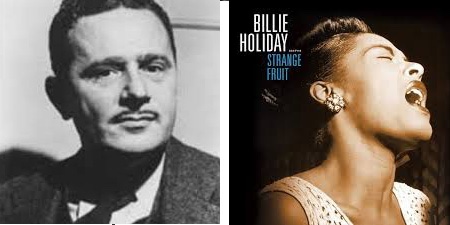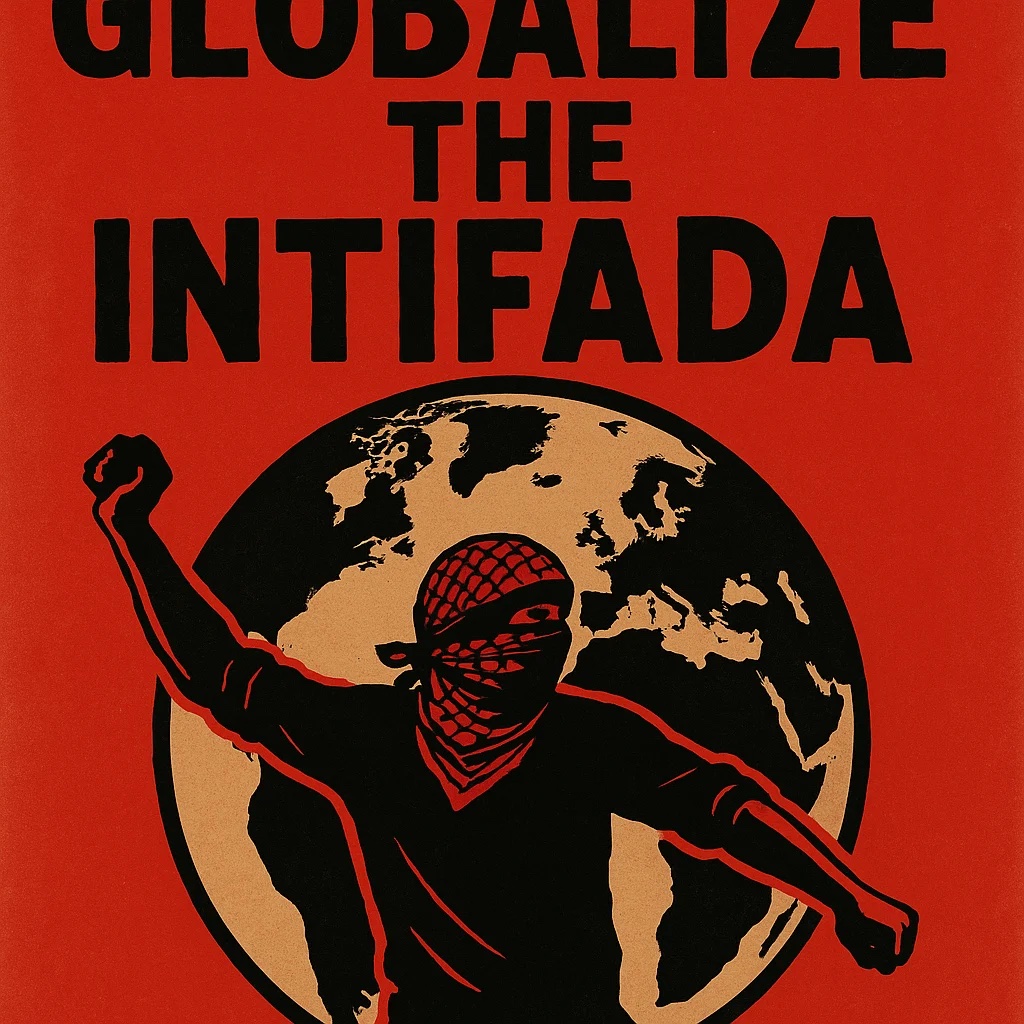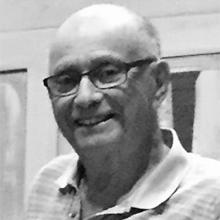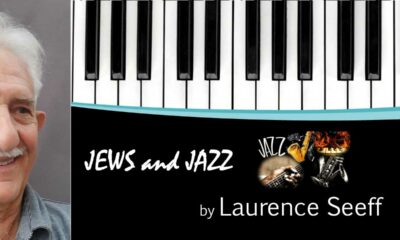Features
Donald Trump and the 2024 Jewish Vote

By HENRY SREBRNIK How did American Jews vote in the November 5, 2024 presidential election? There’s no simple answer. American Jews are a hard-to-define religious and ethnic group spread across multiple American Census categories, possessing last names from at least a dozen different languages and clustered in places that are often overwhelmingly non-Jewish. It takes a team of demographers and sociologists to determine a plausible American Jewish population figure.
So deciding who qualifies as a Jewish voter is not that easy. Must they feel a sense of belonging to the Jewish people, however defined? Or can they be “simply” Jewish, perhaps with a non-Jewish partner and children not being brought up as Jews? (After all, we have Jews by birth who are “anti-Zionists” and supporters of Palestinian efforts to destroy Israel.) That’s why figures vary widely.
American Jews number less than 2.5 per cent of the total U.S. population. To be sure, Jews vote in much greater percentages (approximately 80 per cent) than the rest of the American public (about 66 per cent). But the Jewish role in American politics goes well beyond the ballot box. In 2016, the Jerusalem Post reported on a study showing that Jews donate 50 per cent of all funding to the Democratic Party and 25 percent of all funding to the Republican Party. For the 2024 election, Forbes revealed that the top 15 donors to the Kamala Harris campaign were all people who identified as Jewish.
For about a century, American Jews, however defined, have been a reliable piece of the Democratic Party base, usually delivering two-thirds or more of their votes to the party’s presidential nominee. Over the last half century, going back to the 1968 election, Jews have favored the Democratic candidate by about 71 to 29 per cent. But in 2024, change was in the air, despite the absurd claims by some people that Donald Trump was an “antisemite.”
It turns out this proved largely baseless, according to the “2024 Jewish Vote Analysis,” a report released on November 20, 2024 by WPA Intelligence, a conservative political consultancy and analytics firm. In examining available exit polling, city and county data, and precinct data, it suggested that Trump’s strongest gains were among “those who live the most Jewish lives and reside in the most Jewish communities.”
Looking at Jewish neighbourhoods and towns, “the trends are stark and unmistakable,” WPA Intelligence stated. “Because Judaism is in some ways a communal religion and observant Judaism requires localized infrastructure, Jews who live in Jewish areas tend to be more religious and engaged. And in these neighborhoods, we see large shifts towards Trump.” Some of the most dramatic swings in the Jewish vote happened in New York. It also identified shifts in heavily Jewish areas of California, Florida, Michigan, New Jersey,and Pennsylvania. (California, New Jersey, and New York are where more than 45 per cent of American Jews live.)
“The trend is apparent from Trump’s near-unanimous support among Chassidic and Yeshivish Jews; to his rapid consolidation of the Modern Orthodox vote; to incremental gains even in more liberal Jewish areas such as Oak Park and Upper Manhattan,” the report added. “So, too, is it diverse ethnically and geographically, occurring coast to coast and overrepresenting Persian and ex-Soviet Jewish communities.”
Trump received the “overwhelming” majority of votes in New York City precincts with a Jewish population of at least 25 per cent. His 2024 performance in New York marked a substantial improvement over the 2020 and 2016 elections.
Trump also enjoyed greater success in heavily Jewish enclaves of deep-blue Democratic cities such as Chicago and Los Angeles, according to data compiled by the Chicago Board of Election Commissioners and the Los Angeles Times, respectively.
These gains have been confirmed by the Jewish website Tablet. “Who Won the Jewish Vote?” by Armin Rosen, published on November 14, 2024, includes very detailed comparisons of precinct-level numbers from the 2020 and 2024 elections. It indicated that Trump did improve his performance in a range of Jewish neighborhoods across America. “From the yeshivas of Lakewood, New Jersey, to the bagel shops of New York’s Upper West Side; from Persian Los Angeles to Venezuelan Miami; from the Detroit suburbs to the Chabadnik shchuna in Brooklyn’s Crown Heights, Jewish areas voted in higher percentages for the Republican candidate than they did in 2020.”
Nearly every neighborhood in New York with a notable density of Jewish-specific businesses and institutions, be they Hasidic, Litvish, Syrian, Russian, Bukharan, Conservative, Reform or modern Orthodox, voted heavily Republican or saw a rise in Trump’s performance.
In Brooklyn, the Midwood precincts containing Yeshiva of Flatbush voted 62 per cent for Trump. In Brighton Beach, Brooklyn’s main post-Soviet Jewish enclave, Trump’s support was consistently in the 75-90 per cent range. In Crown Heights, headquarters of the Chabad Hasidic movement, Trump got 62 per cent of the vote this time around, likely on the strength of higher turnout among Chabadniks. Back in 2016, when Trump ran against Hillary Clinton, he won 69 per cent of the vote in all of Assembly District 48, which encompasses Borough Park and Midwood (both largely Jewish communities). This year, he won 85 per cent of the vote in the district.
In the Bronx, Trump received 30 per cent of the vote in the precinct containing the Riverdale Jewish Center, and 38 per cent in the precinct with the neighborhood’s Chabad house. In Manhattan, a few of the borough’s lightest-blue Democratic precincts have the Yeshiva University campus at their center, and Trump managed to receive 37 per cent of the vote there. The Upper West Side, a traditional liberal Jewish political and cultural bastion, remained dark blue. But even there it was possible to see a shift.
Ranging a bit further afield, at least one plausible study, a poll taken by the Teach Coalition, an advocacy group founded by the Jewish Orthodox Union, found overall Jewish support for Trump in the New York suburbs at 40 per cent. Nassau County, where Jews make up close to 20 per cent of the population, saw Trump win it by five per cent, while Joe Biden took it by 10 in 2020.
The returns from other major American Jewish population centers tell a similar story, according to Tablet. Over 600,000 Jews live in New Jersey. The modern Orthodox stronghold of Teaneck gave Trump 35 per cent. In fact, he won 70 per cent of the vote in districts where most of the town’s synagogues are located. In Lakewood, where nearly every strain of Orthodox Judaism is represented, “Some of the precinct results are eye-watering,” reports Tablet. There, Kamala Harris got just 11.2 per cent. In one Lakewood precinct, District 27, Trump won all the votes, 366–0, and in another, District 36, he won 560 votes, losing only a single vote.
Trump carried Passaic County, home to a sizable Orthodox Jewish constituency. Jews make up about 25 percent of the county’s population and it has been a Democratic stronghold for decades. Biden took it with 57.5 per cent to Trump’s 41 per cent four years ago. In 2024, Trump won it with 50 per cent to Harris’s 46.5 percent. That’s a 16-point overall swing in Trump’s favor.
Voting data indicates that there was a significant shift among Jewish voters in in the crucial state of Pennsylvania. It was one of the few states without a large Orthodox Jewish population where Trump did especially well with Jewish voters. Harris did win Pennsylvania Jewish voters by seven percentage points, 48-41, according to a survey conducted by the Honan Strategy Group for the Teach Coalition. However, 53 per cent of Jewish voters said they would have pulled the lever for her had Pennsylvania governor Josh Shapiro been her running mate, while support for Trump would have dropped to 38 per cent. Jewish community leaders claimed that Shapiro was subjected to an ugly, antisemitic campaign that led to him being passed over for the slot.
The Miami area is home to over 500,000 Jews. Aventura is one of the community’s bellwethers, and Trump gained 59.7 per cent this year. An almost identical shift happened in the Miami Beach community of Surfside, where Trump took 61 per cent. Bal Harbour, another Jewish enclave, saw Trump gain 72 per cent.
In Palm Beach County, there are about 175,000 Jews out of a population of 1.5 million, or about 12 per cent. Harris won this county by 0.74 per cent, while Biden won it by 13 per cent in 2020. Trump’s vote climbed nearly seven per cent while hers dropped an equal amount off Biden’s number. Almost exactly the same type of shift happened in Broward County, where Biden got 64 per cent in 2020; the vote shifted 14 per cent toward Trump this year. Jews make up about 10 per cent of the Broward population.
In Los Angeles, where 560,000 Jews live, an article by Louis Keene, “How a Jewish Neighbourhood in Liberal Los Angeles Became a Stronghold for Trump,” published December 10 in the Forward newspaper, provides a detailed picture of the Jewish electorate. The political shift in Pico-Robertson, an Orthodox neighborhood in LA’s Westside, reflects voters “with a change of heart and changing demographics.”
Formerly majority Democratic, in 2024 for the first time, parts of Pico-Robertson turned red. Its two largest precincts swung for Trump, who received about 51 per cent of the votes compared to 44 per cent for Harris. Rabbi Elazar Muskin, who leads Young Israel of Century City, one of the oldest and largest synagogues in the neighbourhood, estimated that up to 90 per cent of his congregation voted for Trump, largely because of Israel.
As Yeshivish and Mizrahi Jews — those of Middle Eastern or North African heritage — have established a greater presence in Pico-Robertson, the area has become increasingly defined by a conservative culture and electorate. There is also a booming Persian population, as well as emergent Chabad and other Hasidic Jews.
A poll of Orthodox voters by Nishma Research in September found 93 per cent of Haredi voters supporting Trump; while data on the Persian Jewish community’s politics is harder to come by, community leaders said the numbers are similar.
Elsewhere in LA, the presence of a Chabad house or a synagogue was a reliable predictor of Trump support. For instance, Trump got 40 per cent of the vote in the North Hollywood precinct where Adat Yeshurun Valley Sephardic and Em Habanim Sephardic are located.
Los Angeles in turn mirrors the general trend in the rest of the country. Michigan is home to 116,000 Jews. West Bloomfield, centre of the Detroit-area Jewish community, went 43.7 per cent for Trump. Illinois’ 319,000 Jews live mainly in Chicago. Trump picked up votes in the Far North Side wards where Orthodox Jewish voters live, especially in the 50th Ward, where his vote increased to 46.85 per cent from 33.77 per cent in 2020.
Of course the Republican vote did not just come from the very religious. Trump also clearly gained among those most committed to Jewish identity, regardless of affiliation or observance, who were driven by concerns over left-wing antisemitism after the October 7 massacre.
Over the course of his campaign, Trump repeatedly touted his support for the Jewish state during his first term in office. While courting Jewish voters, Trump reminded Jews about his administration’s work in fostering the Abraham Accords, promising to resume the efforts to strengthen them. Trump also recognized Israel’s sovereignty over the Golan Heights, a strategic region on Israel’s northern border previously controlled by Syria, and he also moved the U.S. embassy in Israel to Jerusalem, recognizing the city as the Jewish state’s capital.
We must lay to rest the nonsense about Trump being antisemitic, lest we are to believe that the more Jewish you are, the more likely it was that you voted for an enemy of the Jewish people. Americans, including Jews, returned the arguably most pro-Israel president since the founding of the modern Jewish state to the White House.
Henry Srebrnik is a professor of political science at the University of Prince Edward Island.
Features
A People and a Pulse: Jewish Voices in Jazz and Modern Music

By MARTIN ZEILIG Jazz history is usually told through its most iconic names — Armstrong, Ellington, Parker, Davis — yet running alongside that familiar story is another, often under‑acknowledged one: the deep and enduring contribution of Jewish musicians, bandleaders, composers, and cultural intermediaries.
From the moment jazz emerged at the turn of the 20th century, Jews were not simply observers but active shapers of the music and the industry around it. Their influence — artistic, entrepreneurial, and cultural — has been both significant and, in many respects, disproportionately large. Jews and Jazz (171 pg. $18.75 US) a self‑published work by Laurence Seeff, brings this parallel narrative into sharp, affectionate focus.
Seeff is an ideal guide.
Born in London in 1951, he built a career that moved from statistics to energy policy in Paris, from financial markets at Bloomberg to corporate training in the City of London, all while writing poetry, songs, and humorous verse. Today he lives in Israel, where he continues to write, perform, learn Ivrit, and enjoy life with his large family. Through all these chapters runs a constant passion for jazz — a passion sparked more than fifty‑five years ago when he first heard Terry Lightfoot’s Jazzmen in a Bournemouth pub.
His writing blends clarity, humour, and genuine love for the music and the people who made it.
The musicians he profiles often came from immigrant families who brought with them the musical DNA of Eastern Europe — the cadences of synagogue chant, the urgency of klezmer, the cultural instinct for learning and artistic expression. When these sensibilities met the African American genius of early jazz, the result was a remarkable creative fusion.
Some figures, like Chico Marx, are better known for comedy than musicianship, yet Seeff reminds us that Chico was a serious pianist whose jazz‑inflected playing appeared in every Marx Brothers film and whose orchestra launched young talents like Mel Tormé. Others — Abe Lyman, Lew Stone, and Oscar Rabin — shaped the dance‑band era on both sides of the Atlantic.
Canadian readers will be pleased to find Morris “Moe” Koffman included as well: the Toronto‑born flautist and saxophonist whose “Swinging Shepherd Blues” became an international hit and whose long career at the CBC helped define Canadian jazz.
Seeff also highlights artists whose connection to jazz is more tangential but culturally revealing. Barbra Streisand, for example — a classmate and choir‑mate of Neil Diamond at Erasmus Hall High School — was never a natural jazz singer, yet her versatility allowed her to step into the idiom when she chose.
She opened for Miles Davis at the Village Vanguard in 1961 and, nearly half a century later, returned to the same club to promote Love Is the Answer, her collaboration with jazz pianist Diana Krall. Her contribution to jazz may be limited, but her stature as one of the greatest singers of all time is unquestioned.
Neil Diamond, too, appears in these pages.
Though not a jazz artist, he starred — with gusto, if not great acting finesse — in the 1980 remake of The Jazz Singer, 53 years after Al Jolson’s original. The film was not a success, nor was it truly a jazz picture, but its title and its star’s Jewish identity make it part of the cultural tapestry Seeff explores.
Diamond and Streisand recorded together only once, in 1978, on “You Don’t Bring Me Flowers,” a reminder of the long‑standing artistic ties between them.
Mel Tormé, by contrast, was deeply rooted in jazz. Nicknamed “The Velvet Fog,” he was a prodigy who sang professionally at age four, wrote his first hit at sixteen, drummed for Chico Marx, and recorded with Benny Goodman and Artie Shaw. Ethel Waters once said he was “the only white man who sings with the soul of a black man.” His story exemplifies the porous, collaborative nature of jazz.
Seeff also includes non‑Jewish figures whose lives intersected meaningfully with Jewish culture. Frank Sinatra — perhaps the greatest crooner of them all — was a steadfast supporter of Jewish causes, from protesting during the Holocaust to raising funds for Israel Bonds and the Hebrew University. His multiple visits to Israel, including a major concert in Jerusalem in 1975, underscore the depth of his connection.
Danny Kaye earns his place through his close work with Louis Armstrong, his pitch‑perfect scat singing, and his starring role in The Five Pennies, the biopic of jazz cornetist Red Nichols. Though not a jazz musician per se, his performances radiated a genuine feel for the music.
A later generation is represented by Harry Connick Jr., whose Jewish mother and New Orleans upbringing placed him at the crossroads of cultures. A prodigy who played publicly at age five, he went on to become one of the most successful jazz‑influenced vocalists of his era, with ten number‑one jazz albums.
Even Bob Dylan appears in Seeff’s mosaic — another reminder that Jewish creativity has touched every corner of modern music, sometimes directly through jazz, sometimes through the broader cultural currents that surround it.
Taken together, the concise portraits in Jews and Jazz form a lively, engaging mosaic — a celebration of creativity, resilience, and cross‑cultural exchange. They show how Jewish musicians helped carry jazz from vaudeville and dance halls into swing, bebop, cool jazz, pop, rock, and film music.
They remind us that jazz, at its heart, is a meeting place: a space where people of different backgrounds listen to one another, learn from one another, and create something larger than themselves.
For further information, contact the author at the following email address: laurenceseeff@yahoo.co.uk
Features
Jews in Strange Places

By DAVID TOPPER The Jewish contribution to 20th century popular music is well known. From Jerome Kern through to Stephen Sondheim, Jews played major roles as both composers and lyricists in the so-called Great American Songbook. (An exception is Cole Porter.) It continued in Musical Theatre throughout the rest of the century.
One very small piece of this story involves what Time magazine in the December 1999 issue called “the tune of the century.” First recorded sixty years before that, it is the powerful and haunting tune called “Strange Fruit,” which is about the lynching of black people in the southern USA. First sung by Billie Holiday in 1939, it became her signature tune.
So, why do I bring this up? Because there is a multi-layered Jewish connection to this song that is worth recalling, which may not be known to many readers.
Let’s start with the lyrics to “Strange Fruit,” which are the essence of this powerful piece:
Southern trees bear strange fruit,Blood on the leaves and blood at the root,Black bodies swinging in the southern breeze,Strange fruit hanging from the poplar trees.Pastoral scene of the gallant south,The bulging eyes and the twisted mouth,Scent of magnolias, sweet and fresh,Then the sudden smell of burning flesh.Here is fruit for the crows to pluck,For the rain to gather, for the wind to suck,For the sun to rot, for the trees to drop,Here is a strange and bitter crop.
Before becoming lyrics in a song, this poem stood alone as a potent statement about the lynchings still taking place throughout the American South at the time. The strong metaphorical imagery never explicitly mentions the lynching, which adds to the poetic power of this poem. Standing alone, I believe it’s an important protest verse from the 20th century.
Searching it on the internet, you may find the author listed as Lewis Allan. But that’s not his real name. “Lewis Allen” is the often-used pen name of Abel Meeropol, a Jewish High School teacher from the Bronx in New York. He and his wife, Anne (nee Shaffer), had two stillborn children with those names – a fact that adds a poignant element to this story.
The origin of the poem for Abel was a photograph he had seen of a lynching of black men in the South. I have seen such images, possibly even the one Abel saw: for example, a sepia photograph of two black men hanging from a long tree limb, and a large crowd of white people below (men, women and even children!), most seeming dressed in their Sunday best (some men with straw hats) looking up and gawking at the sight, some with smiles on their faces – as if attending a festive spectacle. Like Abel, I felt repelled by the picture: it turned my stomach. This communal display of horrific cruelty gave me a glimpse into Abel’s mind, and I understood how it compelled him to write about it. He thus wrote the poem, and it was published in a teacher’s magazine in 1937.
Being a songwriter too, in 1938 Abel added a melody and played it in a New York club he often attended. But here’s where this story’s documentation gets contradictory, depending upon who is recalling the events. The club owner knew Billie Holiday, and he showed the song to her. What her initial response was, we cannot know for sure. But we do know that in a relatively short time, she added it to her repertoire. It eventually became her signature tune. She initially sang it in public, but because of its popularity among her fans, there was pressure to record it too.
There were initial rejections from recording companies because of the controversial content. But Commodore Records took a chance and pressed the first recording in April 1939. This was the same year the movie “Gone with the Wind” came out; it was steeped in racial stereotyping. It was also sixteen years before Rosa Parks refused to give up her seat on a bus in Montgomery, Alabama.
As a record, the song obviously reached a large audience. Since the content was about racism, the song was seen as politically radical; not surprisingly, many radio stations banned it from the airwaves.
Furthermore, it’s also not surprising that Abel, a schoolteacher, was called to appear before a committee of New York lawmakers who were looking for communists in the schools. Possibly they were surprised to find that the poem and the song were written by a white man – and a Jew to boot. In particular, they wanted to know if he was paid by the Communist Party to write this song. He was not. And, in the end, they let him go. But shortly thereafter he quit his teaching job.
This took place in 1941 and was a precursor to the continued American obsession with communism into the 1950s, under Senator Joe McCarthy.
Indeed, that episode had an impact on Abel and Anne too. In 1953 Julius and Ethel Rosenberg were convicted of giving information about nuclear science to the Soviet Union, and they were the first married couple to be executed in the electric chair. They left two sons, Michael (age 10) and Robert (age 6). Apparently, immediate family members were reticent to get involved with the boys, possibly afraid of being accused of sympathizing with communism.
Enter Abel and Anne. Without a moment’s hesitation they stepped in, taking and raising the boys. As Michael and Robert Meeropol they eventually went on to become college professors – and naturally were active in social issues. Anne died in 1973. Abel died in 1986 in a Jewish nursing home in Massachusetts, after a slow decline into dementia. Long before that, Billie Holiday died in 1959, ravaged by the drug addition that took her life at forty-four years of age.
See why I called this a multi-layered Jewish story that’s worth telling?
To hear Billie Holiday singing “Strange Fruit” click here: Strange Fruit
Features
Is This the End of Jewish Life in Western Countries?

By HENRY SREBRNIK “Globalize the Intifada” has been the chant echoing through streets since October 7th, 2023. It was never a metaphor, and we now see the gruesome results across the western world, from Australia to Canada: the rise of groups of large, active networks of Islamist and anti-Zionist organizations.
Jews in the West are discovering that the nations they defended, enriched, and profoundly shaped have become increasingly inhospitable. After the Holocaust, explicit Jew-hatred became unfashionable in polite society, but the impulse never disappeared. The workaround was simple: separate Zionism from Judaism in name, then recycle every old anti-Jewish trope and pin it on “the Zionists.”
We have seen the full legitimization of genocidal anti-Zionism and its enthusiastic adoption by large segments of the public. The protests themselves, as they began immediately on October 7th, were celebrations of the Hamas massacres. The encampments, the building occupations, the harassment campaigns against Jewish students, the open calls for intifada, the attacks on Jews and Jewish places have become our new norm. History shows us that antisemitism does not respond to reason, incentive or the honest appeals of the Jewish community.
Outside the United States, there is no Western political establishment with either the will or the capability to address this problem, let alone reverse its growth. I’m sorry to say this, but the future of Western Europe, Canada, Australia, and New Zealand is likely to be increasingly Jew-free.
Today, police stand and watch mobs chant for Israel’s destruction, call for the genocide of its people, harass visibly Jewish citizens, and drive antisemitic intimidation deep into urban life. They now believe their job is to enforce the law only if it does not risk upsetting violent constituencies. This makes Jews expendable, because defending them risks confrontation. This was very clear in the Bondi Beach massacre.
Jews are again donning caps instead of kippot, dressing generically with no cultural markers, and avoiding even a tote bag with Hebrew on it. A corrosive creep toward informal segregation in retail and service sectors is occurring, as Jewish customers report being refused service. A mezuzah hanging from a rideshare mirror leads to cancellations. When Jews express frustration, they are accused of exaggeration or attempting to suppress criticism of Israel. Jewish fear is not treated as a real problem.
“Jews Are Being Sent Back into Hiding,” the title of a Dec. 15 article in the New York Free Press by David Wolpe and Deborah Lipstadt, asserts that the attacks on Jews, including physical assaults, social media campaigns and, most tragically, the recent murders in Australia, are part of a purposive campaign designed to make Jews think twice about gathering with other Jews, entering a synagogue, going to kosher restaurants, putting a mezuzah on the doorpost of their apartments or dorm rooms, or wearing a Jewish star around their necks.
“We know of no one who would consider giving a niece, nephew, grandchild, or young friend a Jewish star without first asking permission of their parents,” they write. The unspoken, and sometimes spoken, question is: “Might wearing a star endanger your child’s well-being?”
Recently, a prominent American rabbi was entering a Target store in Chicago with her grandson, whom she had picked up from his Jewish day school. As they walked into the store the 10-year-old reached up and automatically took off his kippah and put it in his pocket. Seeing his grandmother’s quizzical look, he explained: “Mommy wants me to do that.”
Borrowing a phrase from another form of bigotry, they contend that Jews are going “back into the closet.” No public celebration of Hanukkah took place in 2025 without a significant police presence. Some people chose to stay home.
Lipstadt and Wolpe know whereof they speak. They are respectively a professor of history and Holocaust studies who served as the Biden administration’s ambassador tasked with combating antisemitism, the other a rabbi who travels to Jewish communities throughout the world, and who served on Harvard’s antisemitism task force in the aftermath of the October 7, 2023 pogrom.
What the world has seen over the past two years is a continual, often systematic attempt to terrorize Jews. When political leaders fail to condemn rather than merely “discourage” chants of “globalize the intifada,” we are seeding the ground for massacres like the Hannukah one in Sydney.
If each Jewish holiday will now be seen by antisemites as an opportunity for terror, then the prognosis for diaspora Jewry is bleak. There will be fewer public events, more alarms, more bag checks at doors; there will have to be more security and more police. Unless things change, Jewish life in the diaspora will become more sealed off from the larger society.
Why has this failure come about? Confronting antisemitism, stopping the mobs, challenging the activists, and disciplining antisemitic bureaucrats all carry electoral risk for politicians; Jews are demographically irrelevant, especially compared with Muslim voters, with the U.S. being the only partial exception.
There are those who suggest Jews stop donating funds to educational and other institutions that have turned against us. At this point, I doubt very much that withdrawing dollars will have an impact. For every dollar withdrawn, there will be 100 from Qatar and other sources in its place.
Throughout history, the way a society treats its Jews predicts its future with unerring accuracy. If Jews leave, it will be because a civilization that will not defend its Jews will also defend next to nothing and may itself not survive.
Henry Srebrnik is a professor of political science at the University of Prince Edward Island







